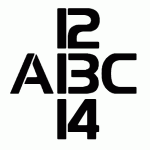Training Trainers
 Training Trainers: Growth and development as Trainer of Cognitive Behavior Management is never ending process. Several factors contribute to this state of affairs:
Training Trainers: Growth and development as Trainer of Cognitive Behavior Management is never ending process. Several factors contribute to this state of affairs:
- CBM is a “cutting edge” technology; meaning that it is still developing and growing
- The theoretical underpinnings are also growing and developing as epitomized by the brain plasticity findings which provide a biological explanation for why cognitive interventions work.
- CBM is counter cultural in that the ‘medical model’ approach is a worldwide failure, but well established. As a result, many people who work in the field will seek to continue the culture of failure. Many clients of the human welfare [educational, clinical, protective and correctional] services are culture as well – they have learned helplessness.
Because of these factors, we suggest that you work backwards from the Instructional Guide for training trainers and start with a sixty-hour training as the beginning level of expertise. This assumes, of course, that you have absorbed a level of expertise yourself, to be able to provide the training. Your expertise should not be limited to what you find in this website, but should include your own expansion of the technology, for it is, after all, cutting edge. Just make sure that any enhancements you make meet the standard of the client as the agent of change and the helper as an enabler in that process.
Related Content
Cognitive and Biological Learning
VII Cognitive and Biological Learning Cognitive Behavior Management derives from theories of learning. Learning is roughly defined as the process by which behavior is modified or added to an organism's repertory. In plain English: the person or animal becomes able to...
Cognitive Behavior Management Theory
Content revision in progress.
Cognitive Behavior ManagementSM Strategies
V. Cognitive Behavior ManagementSM Strategies Includes a collection of techniques and procedures, often incorporating: eliciting: is the process of asking a person probing questions in order to understand their hidden mental processes and in particular how they...
Competence Model
Competence Model A. The advent of competence approaches is a fairly late development in human services. 1. Until recent years, professionals have been dominated by defect approaches. a. Adherents of defect approaches assume that pathological, socially deviant...
Ethics
VI Ethics 01. Ethical considerations: A basic premise of human services that it is helpful in ethical consideration is to consider all human services to be experiments with human subjects. In fact, a strong argument could be made through examination of how such...
How the Brain(s) Work
VI How the Brain(s) Work We are concerned here with cognitive behavior management protocols, techniques and procedures. These interventions have one thing in common; they rely on thought as the agent of change to influence emotions and behaviors. However, thought is...
Imagery
X Imagery An image is a sense of …[something]. A thought is a meaning of …[something]. An image may include a meaning, so an image is in some fashion, more than a thought. Image as in imagining, does not need a visual picture. Although we tend to think of...
Instructional Guide for Training Trainers
Instructional Guide for Training Trainers Associated Content Learning Theory - The Foundation of Cognitive Behavior Management Readings Theory of Cause 13 Theory of Meaning 04 Theory of Change 05 Engagement 13 Messages 06 How the Brain(s) Work 05 Cognitive And...
Learning Theory – The Foundation of Cognitive Behavior Management
Learning Theory: The Foundation of Cognitive Behavior Management Cognitive Behavior Management derives from theories of learning. Learning is roughly defined as the process by which behavior is modified or added to an organism's repertory. In plain English: the person...
Management Resources
B. Management Resources American Bar Association, Criminal Justice Mental Health Standards, 1989. Anthoney, William A., Explaining Psychiatric Rehabilitation by an Analog to Physical Rehabilitation Interventions, Psychosocial Rehabilitation Journal, Vol. 5, 1982....
